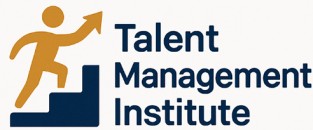
Understanding the Dynamics of Team Management
Grasping Team Dynamics
Understanding the dynamics of team management is a cornerstone of achieving optimal performance within any organization. It's about delving into the core of how teams operate, how members interact, and how leaders and managers can leverage their unique styles to steer the ship toward success.
To effectively manage a team, one must grasp the intrinsic roles each team member plays and how their collaboration translates into collective success. Team dynamics are influenced by numerous factors including the individual skills and experience of team members, the environment in which they operate, and the leadership approaches adopted.
In a team management course, leaders and managers learn the art of combining diverse personalities to foster a cohesive unit. This involves balancing the distinct needs of each individual while maintaining focus on common goals.
- Identify Team Roles: Understanding specific roles and responsibilities can help in aligning team efforts towards a shared objective.
- Cultural Awareness: Teams today often comprise people from varied backgrounds. Recognizing cultural nuances can augment communication and cooperation.
- Adapt Leadership Styles: A flexible leadership approach is imperative for meeting the varying needs of team members and situations.
Well-managed teams exhibit adaptability and robustness. They are prepared against unforeseen challenges, thereby enhancing the organization's agility. Eventually, a comprehensive understanding of team dynamics supports both problem-solving and decision-making processes, allowing leaders to sculpt a high-performing team tailored to the demands of the business environment.
Building a Cohesive Team
Fostering Unity in Your Team
To excel in team management, building a cohesive team is indispensable. Cohesion acts as the glue, aligning individual talents with organizational goals. In today's fast-paced business environment, understanding the dynamics of team management is crucial for leaders and managers. A cohesive team exhibits improved collaboration, responsiveness, and overall performance.
Effective team building starts with understanding the unique strengths and personalities within your team. Leaders must cultivate a team environment where each member feels valued and understood. This might seem challenging, but with a keen sense of emotional intelligence and a genuine intent to support team members, leaders can create a nurturing atmosphere.
Here are a few strategies to achieve this:
- Diversity and Inclusion: Ensure your team is diverse and inclusive. Diverse teams offer varied perspectives that enhance problem solving and decision making in team management.
- Regular Team Activities: Organize team-building activities and workshops to strengthen bonds. This approach promotes teamwork by making the experience more enjoyable and effective.
- Shared Goals and Values: Align the team around shared goals and values. Clearly communicate these to ensure everyone is on the same page and working towards the same objectives.
- Flexible Leadership Style: Adopt an adaptable leadership style that resonates with the team. Being flexible allows you to cater to the changing needs and dynamics of the team members.
Incorporating these strategies requires ongoing commitment from leaders, who must continually learn and adapt. Encouraging open communication and listening to las necesidades de los equipos will help in navigating para equipo challenges. As you build a cohesive team, focus on building trust and transparency, which are essential elements of effective teamwork. By doing so, you’ll empower your team, enhancing both individual careers and organizational success.
Effective Communication Strategies
Communicate for Success in Team Management
Effective communication is a cornerstone of successful team management and can significantly impact a team's overall performance. In a business context, communication is more than just exchanging information. It requires active listening, understanding team members' perspectives, and conveying messages clearly and precisely.
Here are some strategies to foster effective communication within your teams:
- Encourage Open Dialogue: Create an environment where las personas feel comfortable sharing ideas and concerns. This added layer of transparency strengthens trust and collaboration.
- Leverage the Power of Technology: Utilize platforms like Slack or Microsoft Teams for real-time communication and collaboration. These tools can support organizational goals by ensuring everyone stays informed and connected.
- Schedule Regular Check-Ins: Keep the lines of communication open with regular one-on-one meetings. These sessions are crucial for problem solving and gaining insights into team members' needs and aspirations.
- Be Clear and Concise: Avoid ambiguity in communication. Draft messages that are straightforward and to the point to prevent misunderstandings.
- Active Listening: Listen not only to reply but to understand, which allows leaders to make informed decision making and nurture liderazgo equipo.
Incorporating these strategies will help you overcome communication barriers, enhance team understanding, and align individual goals with team objectives, contributing to a smooth-functioning equipo.
Motivating and Engaging Team Members
Boosting Team Dynamics through Engagement
Effective team management hinges on maintaining high levels of motivation and engagement among team members. It is crucial for leaders and managers to develop strategies that both encourage and inspire individuals, fostering a productive work environment. Below are some key approaches to ensure team members are motivated and actively engaged, thereby enhancing team performance.- Understanding Team Needs: At the heart of boosting motivation is recognizing the needs and aspirations of team members. Leaders should engage in regular feedback sessions and conduct surveys to better understand the individual and team dynamics. This process ensures that the team’s goals align with personal career aspirations and contributes to a more cohesive team environment.
- Providing Learning Opportunities: Offering opportunities for professional growth, such as training sessions, workshops, or courses like "gestión equipos" and "estilo liderazgo," can significantly boost motivation. By supporting team members in advancing their skills, businesses not only improve team performance but also aid in personal career development.
- Acknowledging Achievements: Recognition is a powerful motivator. Celebrating achievements, whether big or small, through mediums such as team meetings or internal newsletters strengthens team bonds and reinforces a positive workplace culture.
- Fostering a Supportive Environment: Leaders must strive to create a supportive environment that encourages open communication and feedback. This includes providing tools and resources that aid in effective team management such as collaborative platforms and innovative apps that simplify communication and project management tasks.
- Implementing Flexible Work Policies: Allowing flexibility in work hours and locations can go a long way in motivating the team. This approach acknowledges personal time commitments and contributes to a better work-life balance, ultimately resulting in enhanced job satisfaction and efficiency.
Managing Conflict and Challenges
Overcoming Team Conflicts with Leadership and Empathy
The development of effective team management often encounters hurdles in the form of conflicts and challenges. It’s vital to understand that conflicts, while potentially disruptive, can also serve as a powerful catalyst for growth if approached with the right mindset. Navigating these challenges requires a multi-faceted approach tailored to the team and the business environment. Addressing conflicts begins with recognizing the unique dynamics of your team. Leaders must assess the situation objectively, taking into account individual personalities, cultural backgrounds, and work styles. Sensitivity to these factors can help in understanding the root causes of discord, thus enabling more precise problem solving. Empathy plays a crucial role in this process. Este curso of action involves active listening, showing respect for diverse perspectives, and providing a space where team members feel heard and valued. When team members trust that their leadership is empathetic and fair, they are more likely to cooperate and participate in resolving issues. Furthermore, effective conflict management is underscored by strong communication skills. Whether it’s clarifying miscommunication or mediating discussions, leaders and managers must be adept at fostering open dialogues. This para equipo approach not only defuses tension but also promotes transparency and inclusion. Leaders also need to support a culture that encourages initiative in problem resolution, empowering team members to engage proactively in overcoming obstacles. Offering training sessions or courses focused on conflict resolution tactics can significantly boost team cohesion and effectiveness. Additionally, technology can streamline the process of managing conflicts. A centralized system that respects privacy policy can help record, track, and provide insights into recurring conflict patterns, aiding leaders in preventing future incidents. Investing in los equipos through technology is therefore a strategic move in broadening the management and leadership toolkit. Conclusively, conflict, when managed rightly, can lead to innovative solutions and stronger team bonds, transforming it from a challenge into an opportunity for enhancement in team dynamics and overall performance in your career.Leveraging Technology for Team Management
Integrating Technological Tools for Enhanced Team Dynamics
In the fast-paced world of business, leveraging technology in team management can significantly enhance the performance of your equipo. As las personas in management courses like business school have discovered, integrating the right technological tools is a crucial aspect of effective leadership. Whether it’s fostering communication, supporting decision making, or managing recursos humanos, technology plays a pivotal role.
Technological solutions can support leaders managers by streamlining tareas administrativas. For example, project management software and communication platforms help in tracking los equipos' progress and maintaining clear lines of communication. These tools can be especially helpful in managing remote work environments, ensuring that efforts are coordinated and aligned with the team's objectives.
- Project Management Software: Tools like Asana or Trello help in organizing tasks, setting deadlines, and tracking progress, thus improving accountability dentro del equipo.
- Communication Platforms: Slack and Microsoft Teams facilitate real-time communication, which is vital para el trabajo en equipo, reducing delays and miscommunications.
- Data Analytics Tools: Using data-driven insights aids in understanding las necesidades of the team better, thus aligning strategies de gestion con for optimal results.
- Virtual Meeting Tools: Zoom or Google Meet enable regular meetings, allowing for effective engagement and participative decision-making processes.
Furthermore, technology provides valuable feedback loops through analytics, which will help in continuously improving team management strategies. As a leader, it’s important to embrace these advancements and tailor them para your estilo liderazgo. By doing so, teams grow more cohesive, motivated, and effective.
When selecting technological solutions, consider una estrategia that aligns with your intervention goals. Las personas with solid experience highlight the importance of choosing tools that blend well with existing processes and the team’s workflow.













